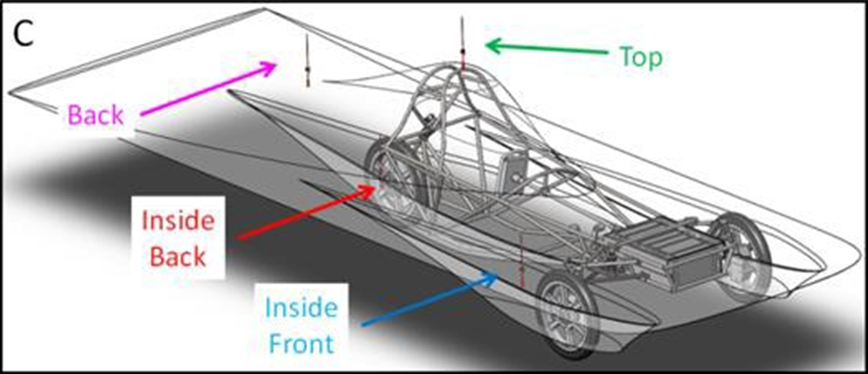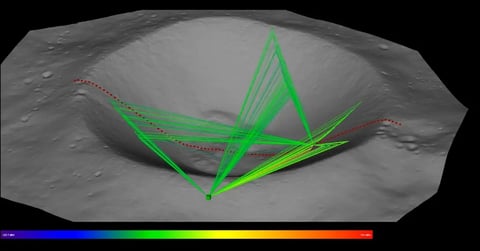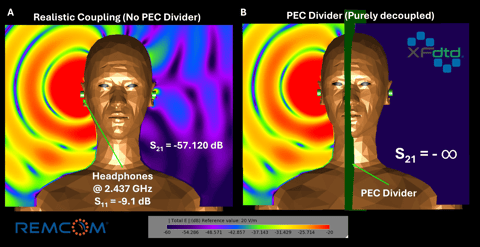Finite-Difference Time-Domain Modeling of Ultra-High Frequency Antennas On and Inside the Carbon Fiber Body of a Solar-Powered Electric Vehicle
Since the first World Solar Challenge in 1987, student groups and others from around the world have been designing, building, and racing solar-powered electric vehicles. These vehicles, primarily one-person, three-wheeled vehicles, are designed to travel during the daylight hours for one to two weeks across 1,200 to 2,400 miles while only charging their batteries from their solar array. During this race, the solar vehicle is flanked in front and back by lead and chase vehicles in order to protect the solar vehicle.
Radio communication, both audio and telemetry data, is required between these vehicles to enhance safety and racing strategy. The telemetry receiving antenna is usually located behind the solar vehicle in the chase vehicle.
In this paper, FDTD simulations are performed on a 900 MHz band antenna inside and outside the carbon fiber body of a solar-powered electric vehicle. Data are analyzed to determine the optimal antenna placement for transmission to a receiving antenna located toward the rear of the solar vehicle. Modeling data are compared to experimental results. Computational fluid dynamics are used to determine acceptability of external antenna placement. It is found that the ideal antenna would be inside the vehicle’s body and oriented vertically, but that the portion of the body surrounding the antenna must be constructed of a non-conductive material.



